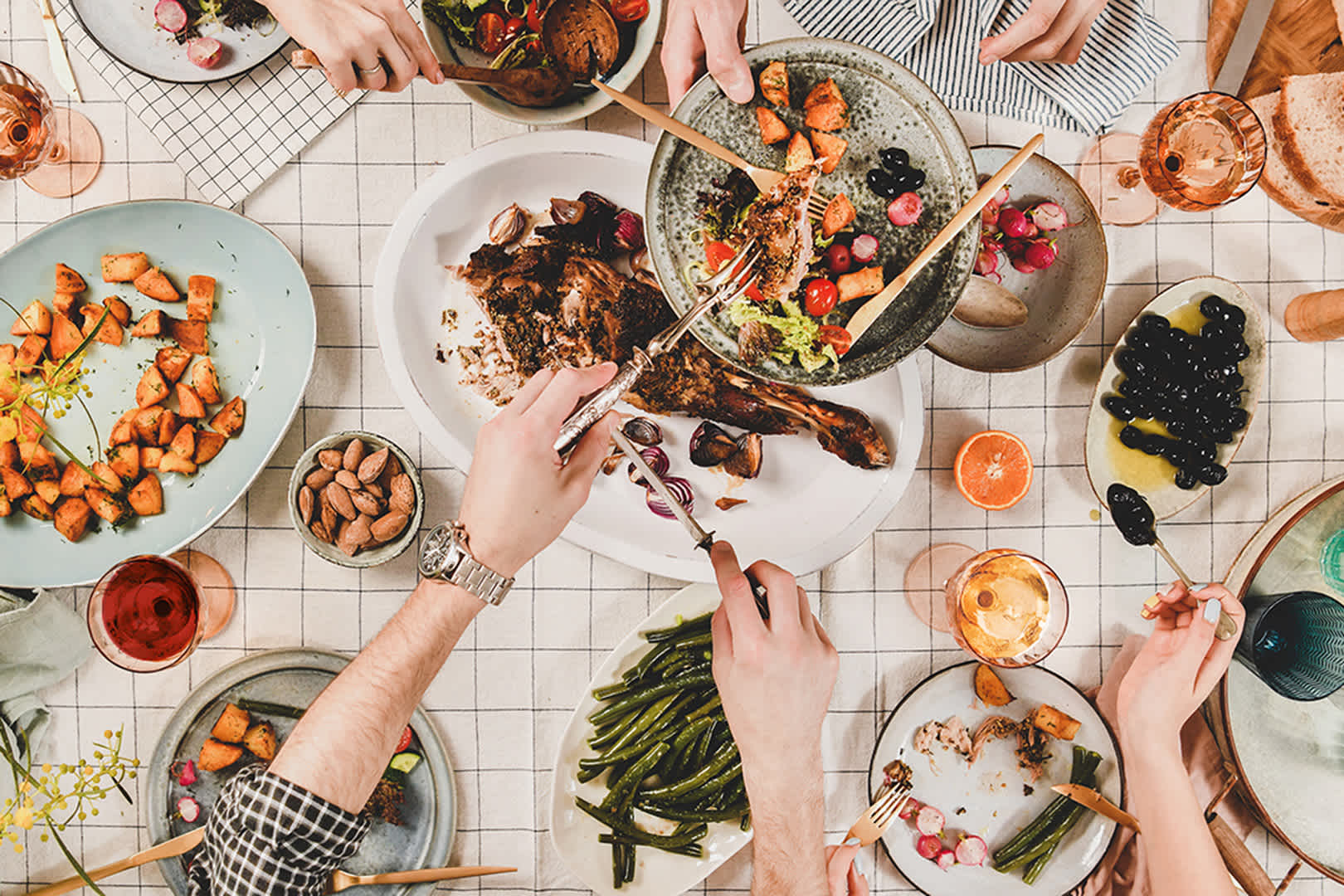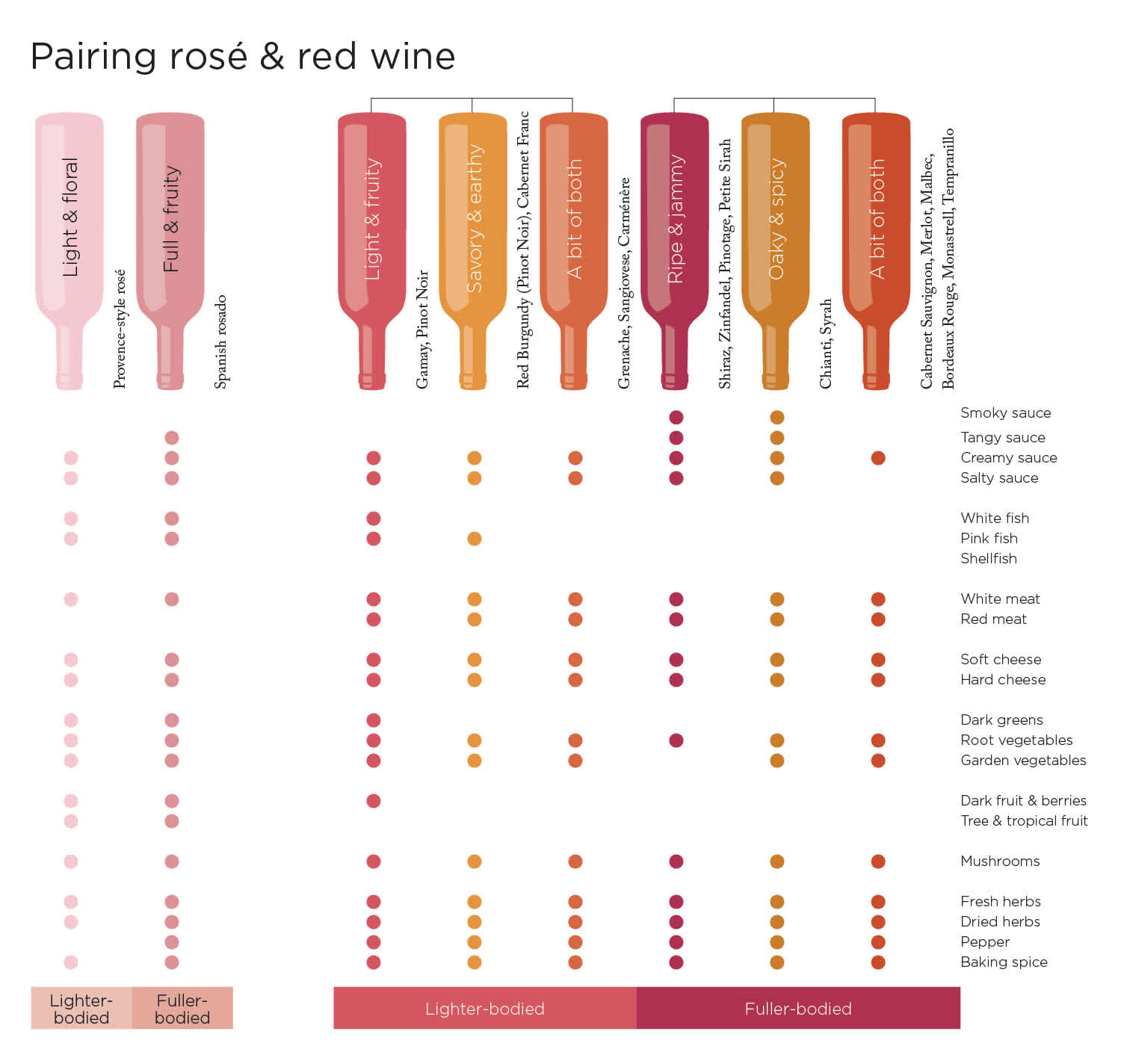How to Pair Wine with Food
Learn about the subtle art of pairing food with wine
Wine is always a treat, and how you choose to enjoy it is up to you. You don't always need a fancy four-course meal to get to most out of your wine. Some wines pair best with your favorite book and comfiest clothes, while others match up perfectly with sunshine and good friends. Everybody and every bottle is different. That said, the right food and wine pairing can elevate an occasion from memorable to unforgettable. In this article, we will teach you how to pair wine with food and share fun facts along the way.
IN THIS ARTICLE:
Want personalized wines?
Get your first box of wines for $44.95 + free shipping.

The basics of wine and food pairing
The best pairings maximize your enjoyment of what's on your plate and what's in your glass. This relies on positive interactions between key characteristics in your food and the wine. Take a moment to think about your meal. What kind of sauce does it have? What is it seasoned with? What flavors stand out the most? Identify what characteristic below is the main focus of your dish and read about the wine style that suits it best.
Salty foods make wine pairing easy. Salt in food is any wine's best friend, making it taste fuller, fruitier and more flavorful overall.
Acidic foods match best with wines that are equally high in acidity. In general, acidic foods make the wine seem fruitier and fuller. However, if the food is more acidic than the wine, the wine will seem flat and full.
Fatty foods call for high-acid wine styles. Wine's natural acidity cuts through fat, cream and grease, creating a pleasing, palate-cleansing effect.
Spicy foods require low-alcohol wines with a hint of sweetness to temper the heat. The spiciness in food emphasizes the burning sensation of alcohol, making wine taste overly alcoholic or bitter.
Sweet foods pair best with sweet wines. If your dessert is sweeter than the wine you're drinking, it can deemphasize the wine's fruit flavors, making it seem less flavorful, dull or even bitter compared to the dish.
Flavorful foods need a wine that matches their flavor intensity. If you have highly flavorful food, pick a wine with rich, prominent flavors over lighter wine styles and vice versa. That way, when you enjoy the food and wine together, you ensure one won't dull the other.
Now that you understand some basic building blocks of how to pair wine with food, next are a few more helpful tips to remember.
Food and wine pairing tips
Flavors take it further
When it comes to flavor, you have two options; complement or contrast. You can match the flavors in your dish to the flavors in your wine. For example, complement the peppery notes in a Washington Syrah by using a peppery dry rub on your steak. This ties the wine and food together even more, creating a harmonious sensory experience. By contrasting flavors in your wine and dish, you can emphasize or deemphasize one or the other. For example, contrast a spicy Thai dish with a sweet and fruity Riesling. The sweet wine will temper the spice, allowing other flavors to shine. As long as you follow the basic food and wine interactions above, you'll discover a world of flavor pairings.
What grows together goes together
This is a common saying in the wine world because it's true! Pairing regional wines with regional foods is one of the easiest ways to create a successful wine and food pairing. When and doubt, eat and drink as the locals do. Some examples of signature regional favorites include:
Sauvignon Blanc and goat cheese
This historic matchup started in France's Loire Valley, where you can spot vineyards and goat farms throughout the countryside. Sauvignon Blanc's high acidity perfectly counters goat cheese's thick creaminess. Beyond their textural compatibility, both offer fresh and tangy flavors, making this an excellent pairing for summer salads or tarts.
Verdejo and tapas
Verdejo is a crisp Spanish white wine that complements a variety of small plates. In Spain's famous tapas bars, tables are adorned with an assortment of cured meats and house-brined olives. These salty bites amplify Verdejo's bright notes of tropical and stone fruits, forming a delicious lunchtime partnership best followed by a relaxing siesta.
Sangiovese and ribollita
Ribollita is a classic Tuscan stew made with white beans, assorted vegetables and thickened with day-old bread. This Italian comfort food is rich in salty and savory characteristics, making it an ideal match for Tuscany's star grape. Sangiovese's natural acidity complements the tomato-based broth, while its signature earthy and herbal notes mirror the flavors in the soup.
Shiraz and steak
Australia is well known for its barbecue culture. These gatherings are for spending time with loved ones and sharing food and drink. Steak sangas (Australian slang for steak sandwich) feature grilled steak, melted cheese and various toppings between two slices of bread. This hearty sandwich is best accompanied by another Australian signature, Shiraz. Both are intensely flavorful. Salty steak and smoky barbecue flavors bring out Shiraz's jamminess and complement its black pepper notes.
Tannins tackle meat
Tannins are found in red wine. They come from grape skins, seeds, stems and sometimes oak barrels. Tannins in red wine grip onto proteins in meat and help break them down. This is why a sip of bold Cabernet Sauvignon will help you chew your way through a bite of steak. Think of them as a natural tenderizer!
When in doubt, grab some bubbles
Ah, the universal pairing. Sparkling wine's lively bubbles, high acidity and upbeat fruit flavors make it pair with virtually any dish. Just remember to match flavor intensity. Light dishes go best with light and fruity styles like prosecco. Flavorful dishes will generally go best with fuller styles like sparkling rosé or cava.
Mythbust!
Red wines go with red meat, and white wines go with fish.
While it's true that a powerful red wine would overwhelm a soft filet of fish, light-bodied red wine styles and crisp rosés make lovely companions to a seafood meal. Their bright fruit flavors pair nicely with salty seasonings and marinades, while their acidity cleanses your palate from fish oils. Try a fatty tuna with a light-bodied Rosé of Grenache or buttery Salmon with a fruit-forward Pinot Noir.
Unexpected combinations
The best way to learn what wines go with what foods is through trial and error. As you explore new combinations on your pairing journey, you may stumble upon exciting new matchups you wouldn't have thought to try. Take note of these combinations and share them with family and friends. Here are some examples of our favorite unlikely duos and why they work.
Champagne and potato chips
While sparkling wines conjure a feeling of luxury and special occasions, one of their best pairing partners is a simple bag of chips. The same greasiness and salty crunch that make potato chips a tasty snack are the same factors that make them a delightful paring partner to sparkling wine. Salt brings out the wine's rich fruit flavors while its high acidity refreshes your palate from lingering oils. Champagne and cava's classic bready notes also pair well with starchy potato chip flavors.
Chardonnay and popcorn
A bowl of buttery popcorn pairs perfectly with Chardonnay. Unoaked styles become fuller and fruitier when served with salty popcorn, and lightly oaked styles match buttery notes with buttery flavors. Or try a salty caramelized popcorn with an oak-aged Chardonnay to enjoy a delectable harmony of toasted, caramelly flavors.
Rosé and fried chicken
This casual duo makes for a seriously delicious matchup thanks to interactions between acidity, fruit flavors, greasiness and salt. Refreshing rosé offers even brighter fruit flavors and fuller textures when served alongside fried chicken, making this a great choice for weekend brunch or lunch with friends.
Cabernet Sauvignon and bacon
Bacon is beloved for its mouthwatering saltiness and smoky flavors, while Cabernet Sauvignon stands out as a bold and flavorful red wine. This combination is packed with flavor and satisfying textural interactions. Cabernet's high tannin levels and acidity break down bacon's protein and fat, while salt shows off the wine's ripe red and dark fruit flavors.
Wine and food pairing, made simple
Looking for an even easier way to pair wine with food? We have created wine and food pairing charts for white, red, and rosé wines. You can start at the top by choosing the style of wine you wish to serve or start with food first by using the list on the right-hand side. These charts are a shortcut to the perfect pairing.
At the end of the day, the best wine and food pairings are the ones you enjoy. Remember that these "rules" are meant to be helpful, not prohibitive. There are so many combinations of flavors and textures that creating totally foolproof rules is impossible. Use these tips and tricks to find the combinations that bring you joy and show you new sides of your old favorites.

WinePrint™ by Firstleaf
Are you looking to learn more about your wine preferences? Check out our Wine Print for an in-depth look at your personal tasting profile. Discover your favorite wines, varietals, regions, and tasting notes and get personalized recommendations wherever you are.
Learn MoreIN THIS ARTICLE
Want personalized wines?
Get your first box of wines for $44.95 + free shipping.


WinePrint™ by Firstleaf
Are you looking to learn more about your wine preferences? Check out our Wine Print for an in-depth look at your personal tasting profile. Discover your favorite wines, varietals, regions, and tasting notes and get personalized recommendations wherever you are.
Learn More

